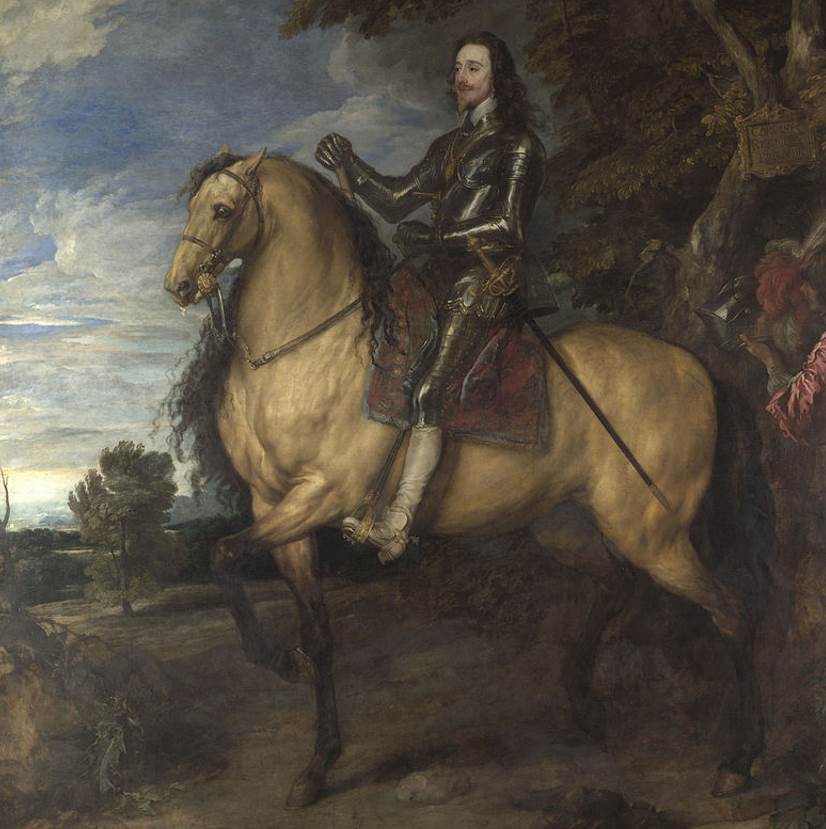One of the most powerful men in Europe in the 16th century won a decisive battle in April 1547. The victory of Holy Roman Emperor Charles V (1500-1558) resulted in the dissolution of a troublesome Protestant military alliance.
To commemorate this victory, Renaissance artists and his court painter at the time Tiziano Vecelli (1490-1576) produced an equestrian portrait of the man the following year.
Let’s take a closer look at some of the most interesting facts about the Equestrian Portrait of Charles V, a remarkable painting by Titian for several reasons.
1. It was completed the year after an important battle in Germany
The Protestant Reformation of the 16th century was a troublesome event for Holy Roman Emperor Charles V, a man who dreamed of both a unified Europe and overseas territories at the same time.
That’s why he didn’t mess around with outbreaks of Protestant military groups that threatened his ambitions. One of these groups was the Schmalkaldic League, a Lutheran league formed by princes who had an extended military complex in place.
They weren’t, however, capable of beating the immense army commanded by Charles V and the Duke of Alba. They were crushed during the showdown of the Schmalkaldic war known as the “Battle of Mühlberg.”
This battle happened on April 27 in what is now the eastern part of Germany the Holy Roman Emperor’s victory resulted in the dissolution of the Schmalkaldic League.
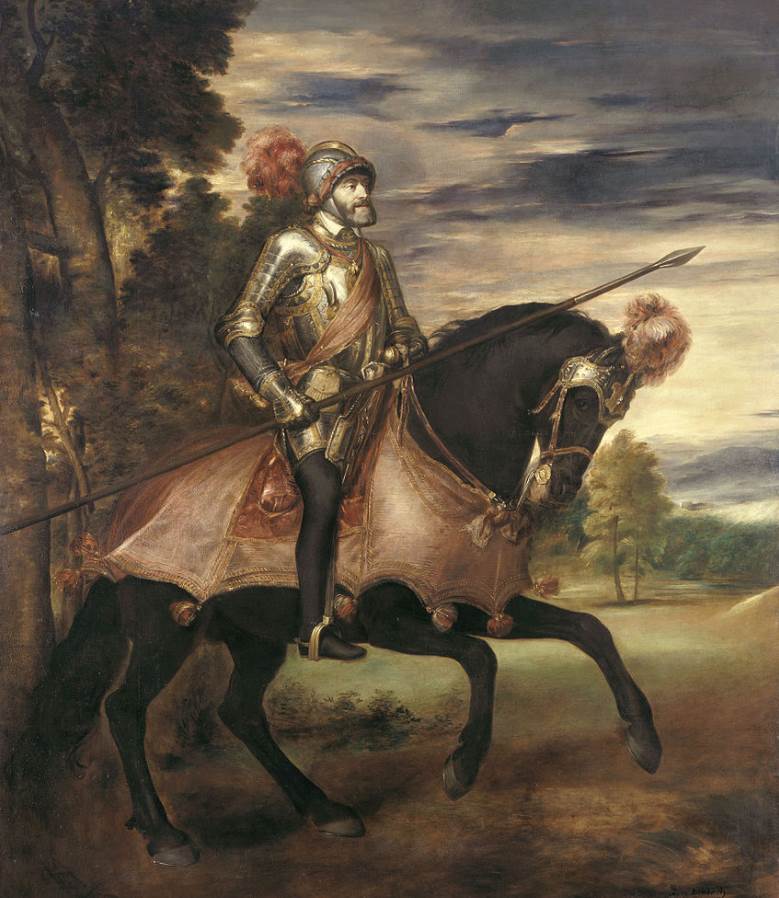
2. The painting was commissioned by the Emperor’s sister
Titian was the court painter of Charles V and the Habsburg rulers during this period in history, one of the many patrons he had during his extensive career.
The painting was commissioned in 1548 in honor of the victory of Charles V and his army during the Battle of Mühlberg by his sister, a woman known as Mary of Austria, Queen of Hungary (1505-1558).
The relationship between the two wasn’t as warm as this gesture suggests. That’s because Mary was fairly tolerant of the Protestant movement during her Governorship in the Netherlands, especially compared to that of her older brother, an extremely devout Catholic.
3. Charles V had a major stake in the outcome of the painting
Just because his sister commissioned the painting from Titian didn’t mean that Charles V didn’t have a say in how he wanted to be portrayed. He knew exactly that this painting would have a profound impact on how he would be perceived by people.
That’s why he gave Titian clear instructions on how he was to be presented. He had a great admiration for the artist and trusted the Renaissance master, already approaching his 60s by then, that he would portray him as a great ruler.
The result was one of the most influential equestrian portraits ever created. It combines the grandeur of the ancient Roman equestrian sculptures with the ideals of how a knight was portrayed during the middle ages.
This painting would become the standard for equestrian portraits for many centuries to come.
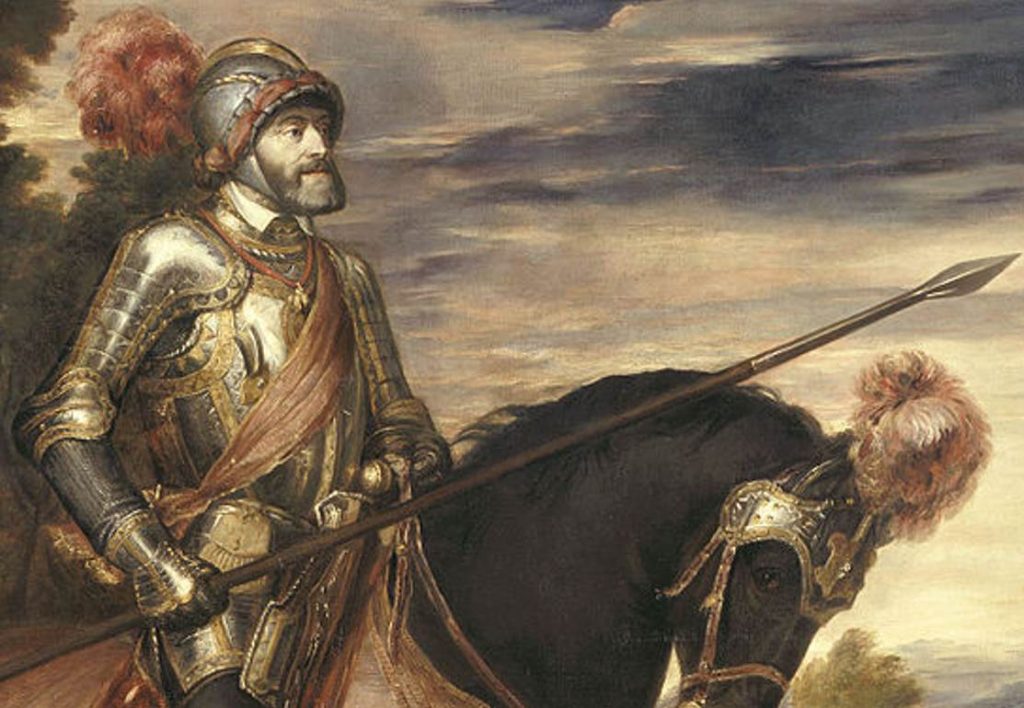
4. It depicts the Emperor exactly how he appeared during the battle
Perhaps one of the most intriguing facts about the Equestrian Portrait of Charles V is the extreme realism in which Titian depicted his subject. This doesn’t just refer to the determined stare of the Emperor but also the armor and harness that he and his horse are wearing.
The man on the horse looks old and fragile (he was suffering from a severe case of gout at the time), but at the same time, he appears determined and powerful as a military leader. This subtle combination of extremes makes this one of Titian’s most intriguing works of art.
The armor and harness have remarkably been preserved and are no part of the collection of the Royal Armoury in the Royal Palace of Madrid.
5. The painting is on display in the most famous museum in Spain
As one might expect, the Equestrian Portrait of Charles V entered the Spanish royal collection upon completion. It didn’t leave the collection until the year 1827 as well.
This was the year that it entered the collection of the most famous museum in Spain, the Museo Nacional del Prado which was established in the year 1819.
The painting didn’t move that far because the Royal Palace of Madrid is located on the western side of the center of the city, while the Prado Museum can be found on the eastern side at walking distance of the Plaza Mayor, the main square in the city.
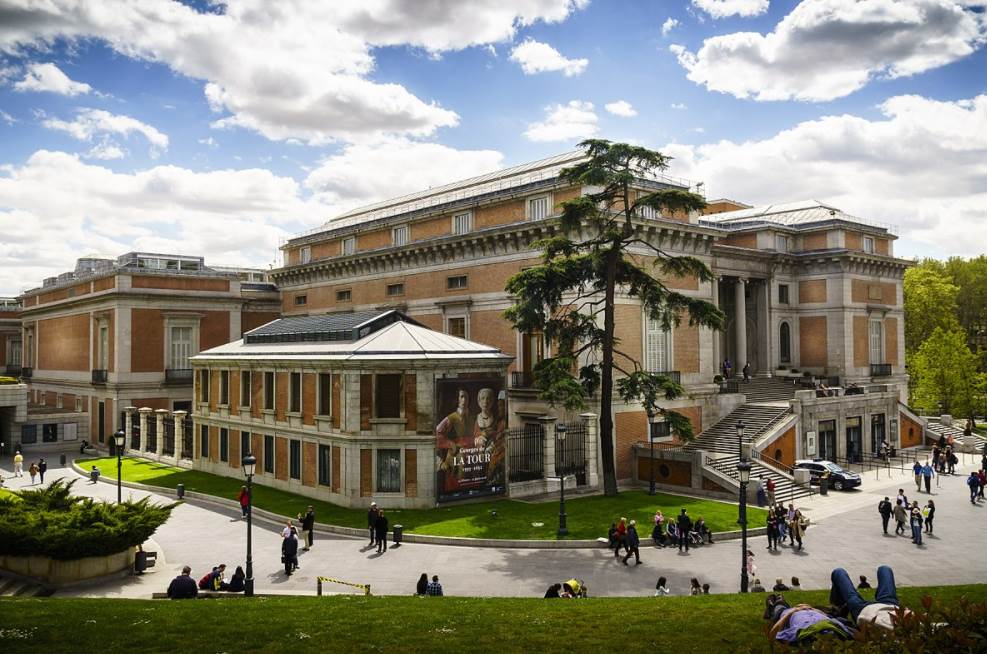
More interesting facts about the Equestrian Portrait of Charles V
6. The importance of the Equestrian Portrait of Charles V is also reflected in the size of the work. This oil on canvas painting was completed in 1548 and has dimensions of 335 × 283 centimeters (132 × 111 inches).
7. The equestrian portrait isn’t the only painting of Charles V that Titian painted during this period. He also completed a portrait in which Charles V can be seen seated in a chair.
Both paintings were completed in the same year while Titian was working at the Imperial Court of the Habsburg Rulers in Augsburg, a city in the south of modern-day Germany. The seated version is on display at the Alte Pinakothek in Munich, Germany.
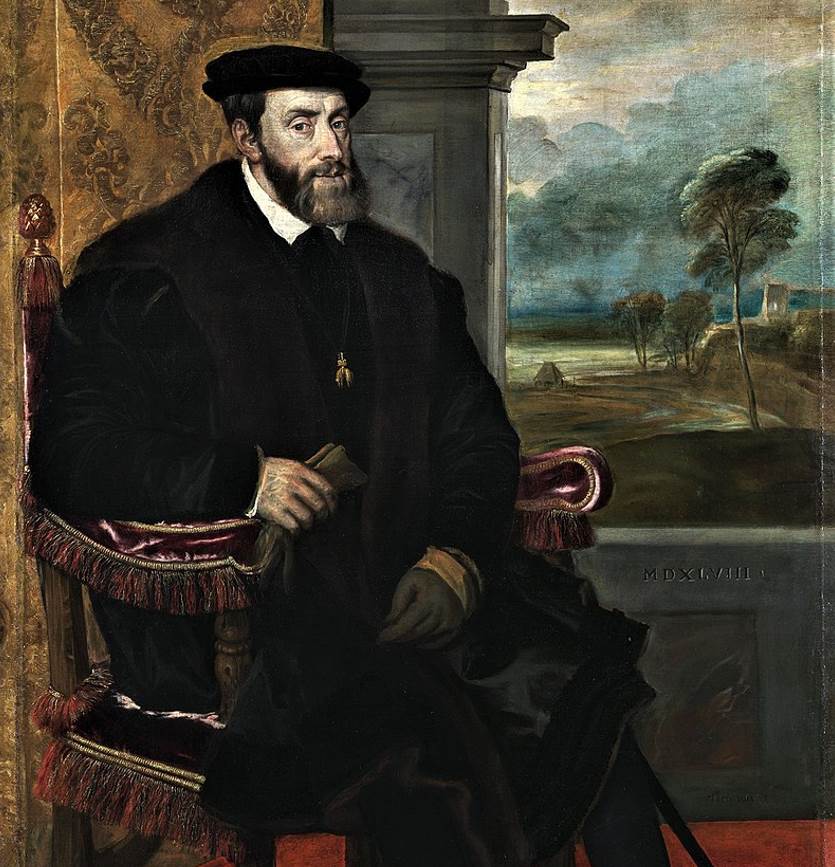
8. Very few court painters managed to build up such a strong friendship with a king or emperor than Titian did with Holy Roman Emperor Charles V. Titian as a highly intelligent man and knew exactly how to deal with such a powerful man.
Their friendship started way back in the early 1530s when the artist produced a painting called “Portrait of Charles V with a Dog.” Titian eventually received the honor of joining the Knight of the Golden Spur, elite members of society in the Holy Roman Empire and his children became nobles as well.
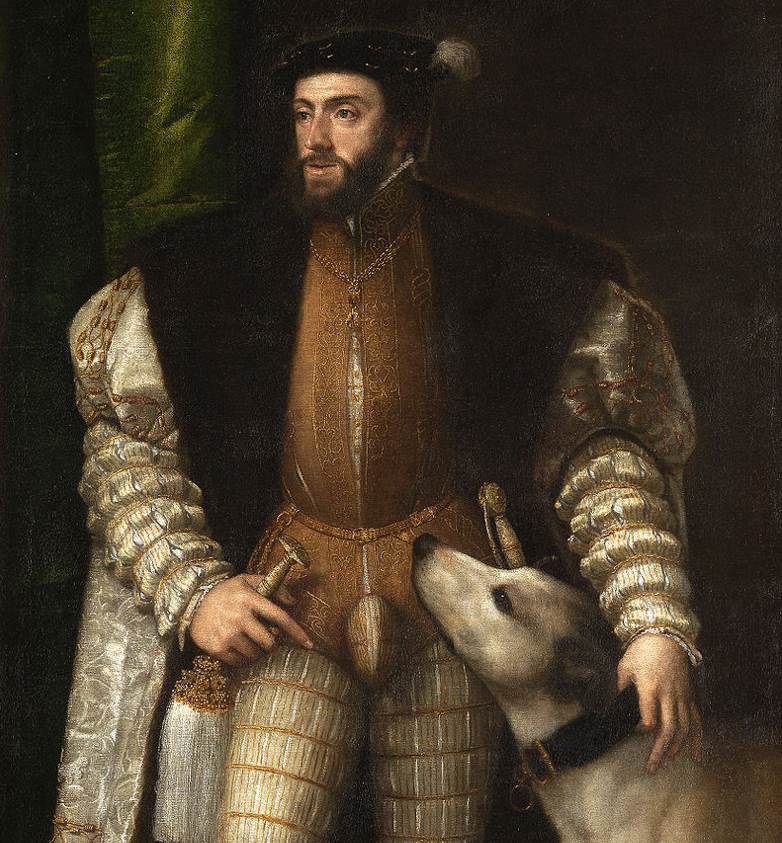
9. The health of the Emperor was nothing like the portrait makes us believe. He’s portrayed as a hero who is determined to storm into the battle, but in reality, he was brought to the battle in a litter, a wheelless vehicle that was carried by several people.
The background features red clouds, a reference to the Battle of Mühlberg of 1547. Titian didn’t shy away from using dark colors to emphasize the horrors of the deadly confrontation that unfolded.
10. The Equestrian Portrait of Charles V set the tone for future equestrian portraits of monarchs all around Europe.
The composition and determination of the main figure have been replicated by numerous famous artists, including Flemish Baroque artist Anthony van Dyck (1599-1641) and Romantic artist Francisco Goya (1746-1828).
Arguably the most famous replication of the composition used by Titian is the Equestrian Portrait of Charles I (1637-1638). The King of England, Scotland, and Ireland was painted by his court painter and depicts the King shortly before the English Civil War broke out in 1642.
This equestrian portrait is now part of the collection of the National Gallery in London.
